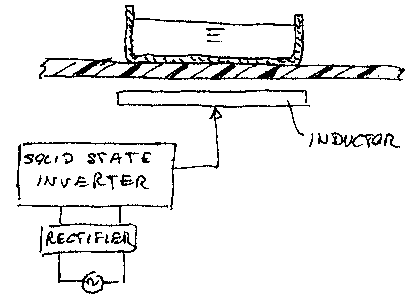Some of the information on this Web page has been provided by external sources. The Government of Canada is not responsible for the accuracy, reliability or currency of the information supplied by external sources. Users wishing to rely upon this information should consult directly with the source of the information. Content provided by external sources is not subject to official languages, privacy and accessibility requirements.
Any discrepancies in the text and image of the Claims and Abstract are due to differing posting times. Text of the Claims and Abstract are posted:
| (12) Patent: | (11) CA 2680957 |
|---|---|
| (54) English Title: | A METHOD FOR CONTROLLING A STATIC POWER CONVERSION UNIT AND INDUCTION HEATING SYSTEM FOR COOKING APPLIANCES USING SUCH METHOD |
| (54) French Title: | METHODE DE CONTROLE D'UNITE STATIQUE DE CONVERSION D'ENERGIE ET DE SYSTEME DE CHAUFFAGE PAR INDUCTION, POUR APPAREILS DE CUISSON UTILISANT CES TECHNOLOGIES |
| Status: | Granted and Issued |
| (51) International Patent Classification (IPC): |
|
|---|---|
| (72) Inventors : |
|
| (73) Owners : |
|
| (71) Applicants : |
|
| (74) Agent: | SMART & BIGGAR LP |
| (74) Associate agent: | |
| (45) Issued: | 2017-05-02 |
| (22) Filed Date: | 2009-09-29 |
| (41) Open to Public Inspection: | 2010-04-08 |
| Examination requested: | 2014-09-24 |
| Availability of licence: | N/A |
| Dedicated to the Public: | N/A |
| (25) Language of filing: | English |
| Patent Cooperation Treaty (PCT): | No |
|---|
| (30) Application Priority Data: | ||||||
|---|---|---|---|---|---|---|
|
In a method for controlling a static power conversion unit to an inductor, particularly for an induction system used in cooking appliances, the value of an electrical parameter of the circuit is monitored at predetermined time intervals (.DELTA.t1) and at a predetermined duty cycle of the power transistor switching frequency, and on the basis of said monitored value, the duty cycle is modulated accordingly between said predetermined time intervals in order to keep the delivered power at a predetermined constant value.
Dans un procédé pour commander un ensemble de conversion de puissance à un inducteur, particulièrement pour un système dinduction utilisé dans des appareils de cuisson, la valeur dun paramètre électrique du circuit est surveillée à des intervalles de temps prédéterminés (.DELTA.t1) et à un cycle dutilisation prédéterminé de la fréquence de commutation de transistor de puissance, et en fonction de ladite valeur surveillée, le cycle dutilisation est modulé en conséquence entre lesdits intervalles de temps prédéterminés afin de maintenir la puissance délivrée à une valeur constante prédéterminée.
Note: Claims are shown in the official language in which they were submitted.
Note: Descriptions are shown in the official language in which they were submitted.

2024-08-01:As part of the Next Generation Patents (NGP) transition, the Canadian Patents Database (CPD) now contains a more detailed Event History, which replicates the Event Log of our new back-office solution.
Please note that "Inactive:" events refers to events no longer in use in our new back-office solution.
For a clearer understanding of the status of the application/patent presented on this page, the site Disclaimer , as well as the definitions for Patent , Event History , Maintenance Fee and Payment History should be consulted.
| Description | Date |
|---|---|
| Maintenance Request Received | 2024-09-03 |
| Maintenance Fee Payment Determined Compliant | 2024-09-03 |
| Common Representative Appointed | 2019-10-30 |
| Common Representative Appointed | 2019-10-30 |
| Change of Address or Method of Correspondence Request Received | 2018-01-12 |
| Grant by Issuance | 2017-05-02 |
| Inactive: Cover page published | 2017-05-01 |
| Inactive: Final fee received | 2017-03-13 |
| Pre-grant | 2017-03-13 |
| Letter Sent | 2016-10-06 |
| Notice of Allowance is Issued | 2016-10-06 |
| Notice of Allowance is Issued | 2016-10-06 |
| Inactive: Q2 passed | 2016-10-04 |
| Inactive: Approved for allowance (AFA) | 2016-10-04 |
| Amendment Received - Voluntary Amendment | 2016-04-29 |
| Inactive: S.30(2) Rules - Examiner requisition | 2015-11-03 |
| Inactive: Report - QC passed | 2015-10-28 |
| Letter Sent | 2014-10-08 |
| Request for Examination Received | 2014-09-24 |
| Request for Examination Requirements Determined Compliant | 2014-09-24 |
| All Requirements for Examination Determined Compliant | 2014-09-24 |
| Application Published (Open to Public Inspection) | 2010-04-08 |
| Inactive: Cover page published | 2010-04-07 |
| Inactive: IPC assigned | 2010-03-08 |
| Inactive: First IPC assigned | 2010-03-08 |
| Inactive: IPC assigned | 2010-03-08 |
| Inactive: Declaration of entitlement - Formalities | 2009-12-02 |
| Reinstatement Requirements Deemed Compliant for All Abandonment Reasons | 2009-11-03 |
| Application Received - Regular National | 2009-10-30 |
| Inactive: Filing certificate - No RFE (English) | 2009-10-30 |
There is no abandonment history.
The last payment was received on 2016-09-07
Note : If the full payment has not been received on or before the date indicated, a further fee may be required which may be one of the following
Patent fees are adjusted on the 1st of January every year. The amounts above are the current amounts if received by December 31 of the current year.
Please refer to the CIPO
Patent Fees
web page to see all current fee amounts.
Note: Records showing the ownership history in alphabetical order.
| Current Owners on Record |
|---|
| WHIRLPOOL CORPORATION |
| TEKA INDUSTRIAL S.A. |
| Past Owners on Record |
|---|
| DIEGO NEFTALI GUTIERREZ |
| GIANPIERO SANTACATTERINA |
| JURIJ PADERNO |